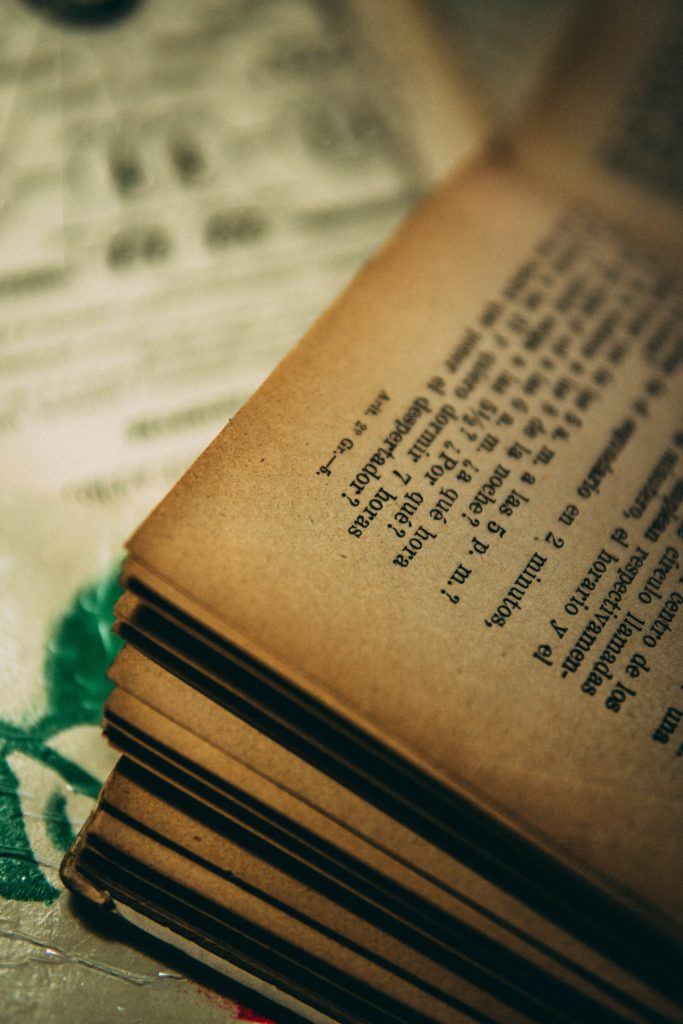
OLD BOOKS
Within the pages of a vintage book, current and future events are a known quantity. There’s no mystery, no tragedy that hasn’t already been resolved by the time you’re reading it. Secreted away in its storyline, you’re safe, but you’ve also got other worlds to visit, to decode, and to use as mirrors in which you can see yourself and your life with the benefit of some detachment. For people who learned to escape into books, an old and well-loved book represents a very specific type of happiness.
Some of the best vintage books I read while growing up were about spectacularly subversive girls and women. As a strong, opinionated girl being raised in a ragingly macho culture, absorbing a thousand messages about all the ways in which I was a female failure, I drew courage and validation from those books. Headstrong, kind, and with a fierce sense of integrity and justice, these were girls and young women who were thrown away by society; forced out of their homes and sent to live in Siberia; mocked and misunderstood for being true to themselves. There were, too, the adventurous boys with more freedom than I could ever hope to have; who ran detective agencies and left their crowded homes to live in the wilderness, tame a falcon, and make leather trousers from a deer hide by hand. (The latter seems like a skill I would really put to good use now.)
Others were written from the point of view of witty, brash women, with children and husbands and, among all of that, a palpable sense of frustration at being held back by dint of their gender. Jean Kerr ‘s essays and Shirley Jackson‘s novels about the life of her young family fascinated me in particular, with their astonishment at the utter weirdness of everyday life as an intelligent woman strapped—as though to the nose of a rocket—to a home and children and a man who might or might not be all that interested in any of it.
In these stories, I found traces of myself, the good as well as the bad, and I learned strategies and methods for not giving up on myself. I discovered options I hadn’t known existed for me. Once in awhile I’ll pick up one of those old books again and I’m surprised to recognize myself in the pages, so deeply have their lessons and general style sunk into my DNA.
And all of that before we even get to the particulars about vintage design, or printing, or that intoxicating old-book smell.
John Ptak is a bookseller whose inventory is strictly vintage science, technology, and “the history of ideas.” We exchanged emails about vintage versus modern books.
“Vintage books will generally be printed on a better paper than moderns (unless it was during wartime or France between the wars and so on) and so will have a better feel. I think vintage books gave the reader’s eyes an easier time by giving more margin space (and more room for marginalia). I happen to like older design more so than modern, except when it comes to cover design, where the two run a tight race to the coolest. There are fantastic covers designed from, say, the beginning of Bauhaus and such, but the oldsters have their own highly addictive styles going way back to stamped vellum in the 15th century. Dust jackets are relatively recent to the book world, and there I’d probably give the cooler design over to modern than to vintage books.
“Vintage (but not necessarily collectible or valuable) books are also bath-tubable, meaning that if they get a little soggy or splashed they will dry out with enhanced character from the experience. Drinking glass rings on the cover tell stories, as do other attractive defects, a kind of Kintsugi in an odd way, or at least acknowledging or celebrating the rough patches and wear that the book has experienced and tolerated.
“Lastly, vintage books just smell great and could have (and probably do, now that I think of it) their own bottleable fragrance. My guess is that in a blind scent test 9 of 10 would prefer an old paperback smell to a new one.”
Ah, that glorious scent. A quick look online confirms that it’s available as a bottleable fragrance, as well as in endless iterations of candle scents. And while “old book” might not be a sexy description, it’s better than the particulars. What you smell in an old book is the breakdown of the cellulose and lignin in the paper, turning into several distinct organic compounds, like toluene and ethyl benzene (both of which smell sweet), benzaldehyde and furfural (both smell a bit like almonds), vanillin (guess what that smells like?), and 2-ethyl hexanol (which gives off a slightly floral scent). Sweet, almondy, vanilla-esque, flowery decay. I think that’s subversive as hell.
Little wonder, then, that vintage books appear in this Compendium, comprising as they do some of the basic tenets of cool: survival, identity, attitude, and subversion.
~ Emma Alvarez Gibson
